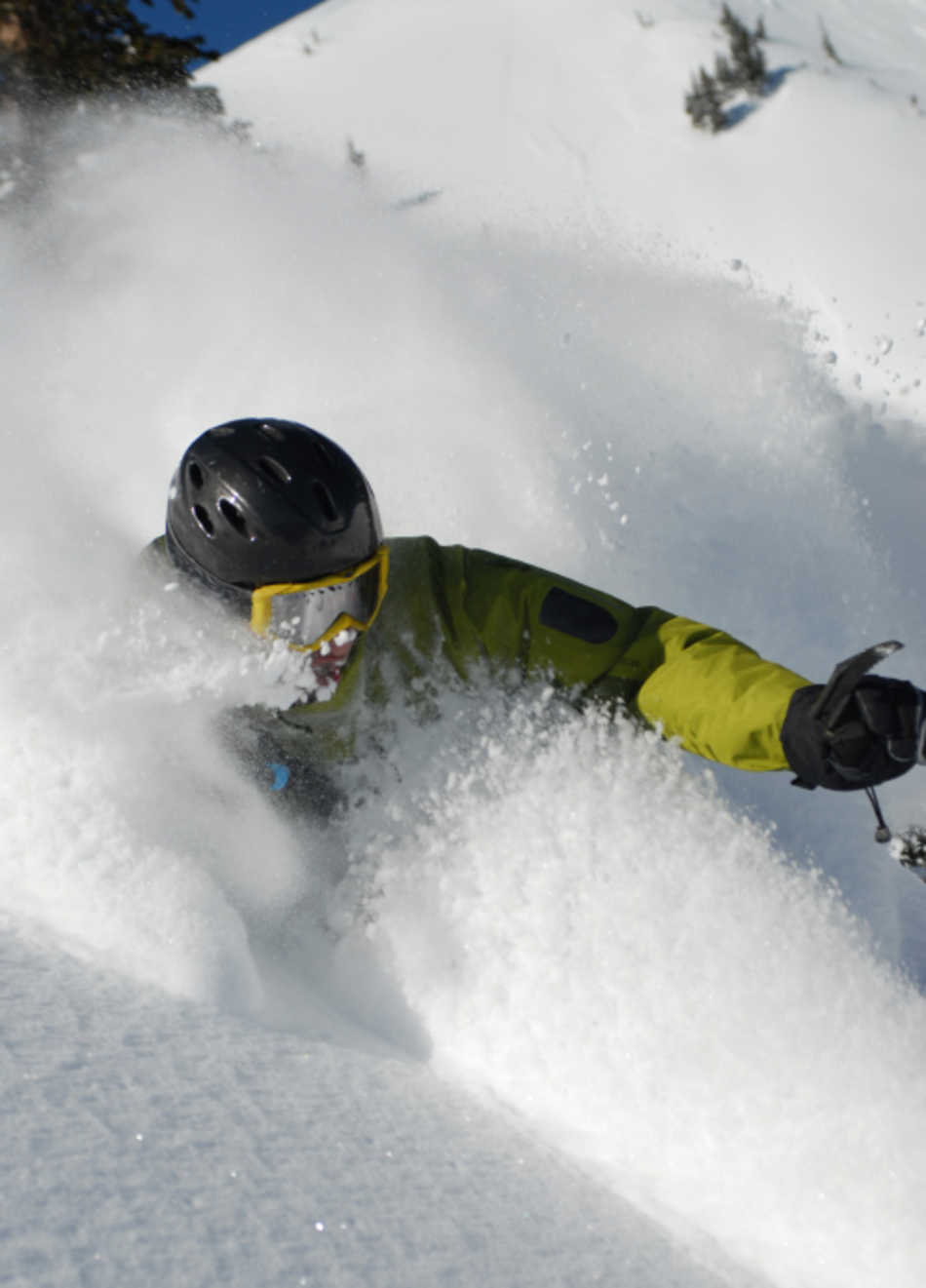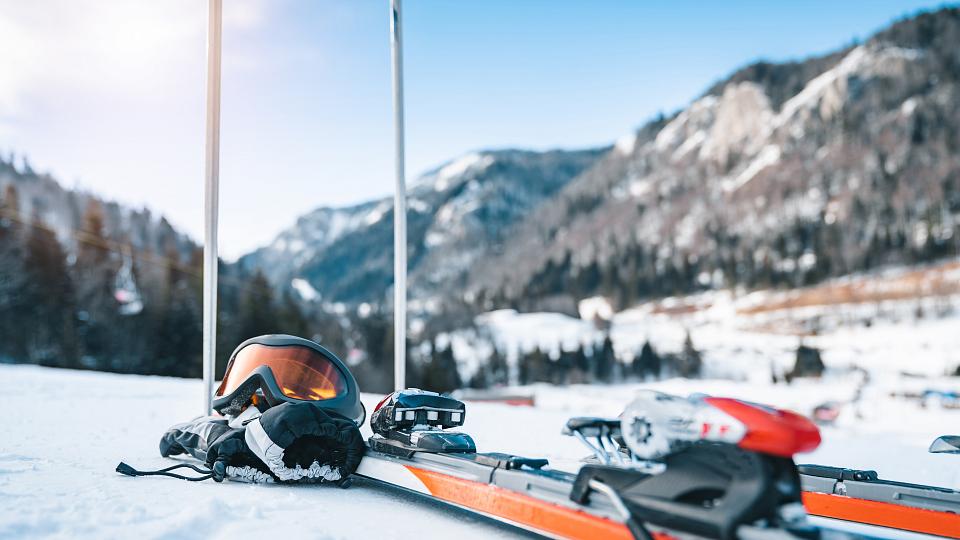
Tom: Ski helmets: are you really safer when you put one on? What you hear might surprise you, next on Scope Radio.
Announcer: Medical News and Research from University of Utah physicians and specialists you can use for a happier and healthier life. You're listening to The Scope.
Tom: I'm here with William Couldwell, who is the chair of the University of Utah's Department of Neurosurgery. Bill is nationally recognized leader and researcher in complex cranial surgery and is the current President of the American Association of Neurological Surgeons.
Bill, a New York Times article came out on New Year's Eve, and it led off with Michael Schumacher's traumatic brain injury. Now, Schumacher, I guess, is the winningest Formula One racecar driver in history. And it seems ironic that he was not injured on the racetrack but he was injured while skiing. And he was wearing a helmet. That seems doubly ironic to me. What do you think about that? Do you think ski helmets help?
William: Well, I think there's two ways to look at this, Tom. I think they do help in that if you do have an injury, they reduce some of the impact to the brain. The problem with ski helmets is that it also may give you a false sense of security. And I think what's happening is that the culture of skiing and snowboarding is increasing the risks and the height and the speed and the rotational injuries. The other thing that helmets don't do is they do not prevent the brain from rotating within the skull. And so they don't prevent that mechanism of injury as well, which is an important one.
Tom: Do you think that's the primary reason that people have traumatic brain injuries in . . .
William: I think it's a combination of the magnitude of the injury, the speed, the torque and also the twisting.
Tom: Well, here we are watching the Sochi Olympics and we're seeing these young athletes just taking great heights and great speeds. And they've always done that. But it seems like it's even accentuated now. And ski resorts are building train parks. And they're supporting events that get in to jumping and going faster.
William: Yeah, I think also the culture is faster, higher. The superpipes now are much bigger than they used to be. Even, you saw Shaun White actually stepped out of the Olympics on the slope style event because he felt that the jumps were to big and it was unsafe.
Tom: It's interesting. I mean, the article, the Times article reported a 250% increase in brain injuries among youths and teenagers between 1996 and 2010 even though the helmet use has increased in that period of time. Which means to me that, I mean, obviously they're doing things that are more intense than they were doing before.
William: I think the bigger issue here is the culture behind it. We've seen over the last few years that NASCAR has done a good job. They've improved equipment and the safety level of their cars and their helmets and to reduce the neck injuries. I think the NFL, right now, is under scrutiny and will be looking at the whole concussion issue. And in the helmets, we're actually putting monitors to measure torque and pressure within the helmet to get an idea of the kind of stresses that these players are seeing during the individual games.
Tom: And there's nothing yet like that in skiing.
William: No, in fact, Kevin Pierce and I are talking about doing that within snowboard helmets now.
Tom: Great.
William: A study with torque monitors.
Tom: So, finally, to our listeners, what advice would you have for the weekend warrior skier, or the teenage athlete, in terms of reducing their risk for traumatic brain injury?
William: Well, I think the important thing is to remember that these injuries can be life changing. I think that we need to deliver that message stronger. I think we need to be . . . if I was a parent who had children of this age now, I'd have them wearing the best helmet, the best sanctioned helmet that you could buy for them.
Tom: But that, there was another question I had. Are there differences between helmets?
William: There are different types of helmets. And certainly a motorcycle helmet is much bigger and bulkier than a snowboarding helmet. The trouble is that with the snowboarding they want a light helmet with good visibility, but it doesn't give them the optimal protection.
Tom: Exactly.
William: Like a football helmet would. Or a motorcycle helmet.
Tom: Or a motorcycle helmet with a chin guard on it, yeah.
William: Exactly. And so that's the problem. So, you're fighting this compromise all the time.
Tom: So, I'm sorry, I think your last piece of advice . . .
William: Yeah, so I think we should buy the best equipment for our children. And we should encourage them to wear it. I think the other issue that we didn't discuss is the neck injury issue, and the spinal cord injury.
Tom: Clearly. I mean, these helmets don't prevent against neck injury.
William: Every year here we see significant spinal cord injuries. . .
Tom: That's great to know that.
William: . . . especially from these train parks. And the twisting and the falling and the torqueing of the neck can be just as much of an injury to the spinal cord. And that can have a huge impact on life as well. And so I think it's a combination of the head injury plus the neck injury that I'm concerned about. We have a greater responsibility as parents and business leaders. And I don't think that we should push the limits, understanding that they're not going to have the judgment to deal with that.
Male: We're your daily dose of science, conversation and medicine. This is The Scope, University of Utah Health Sciences Radio.





